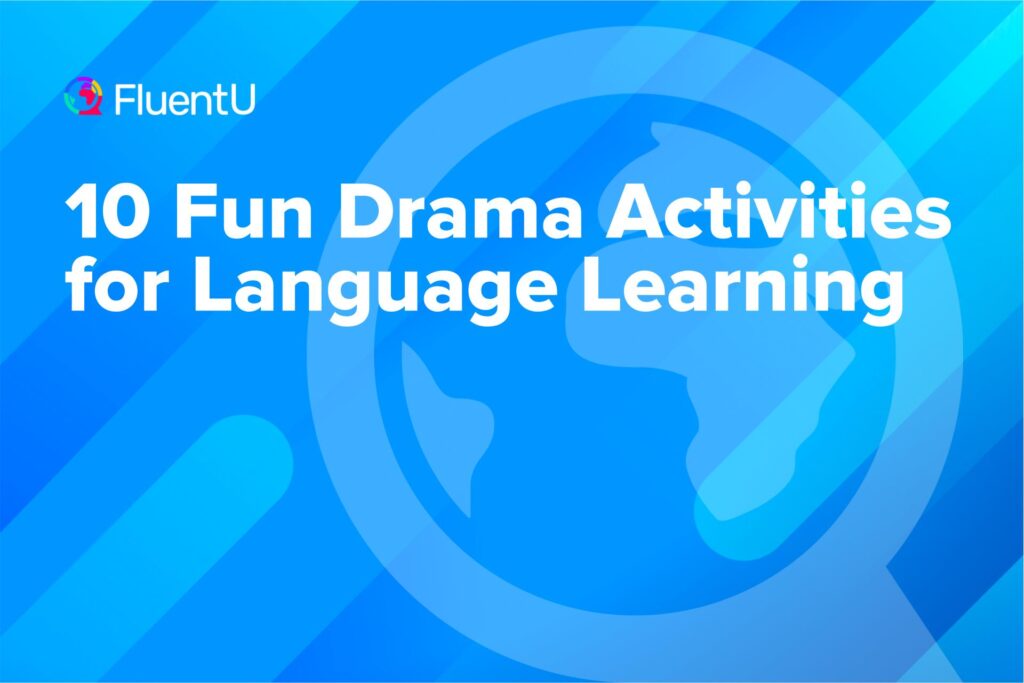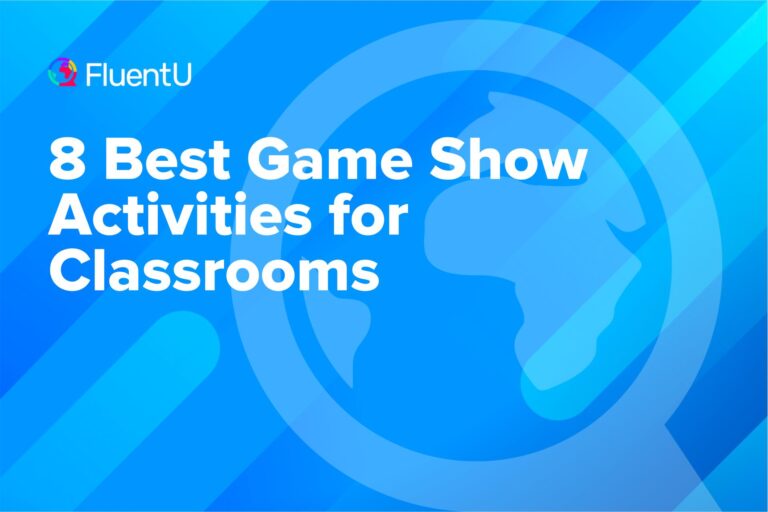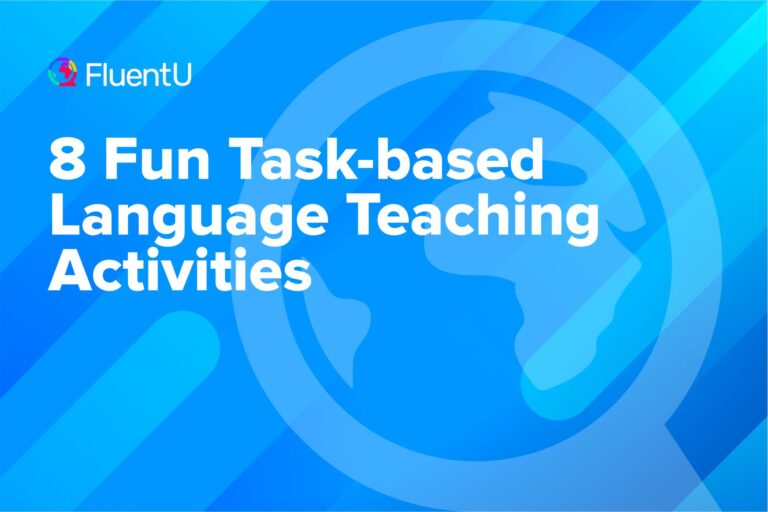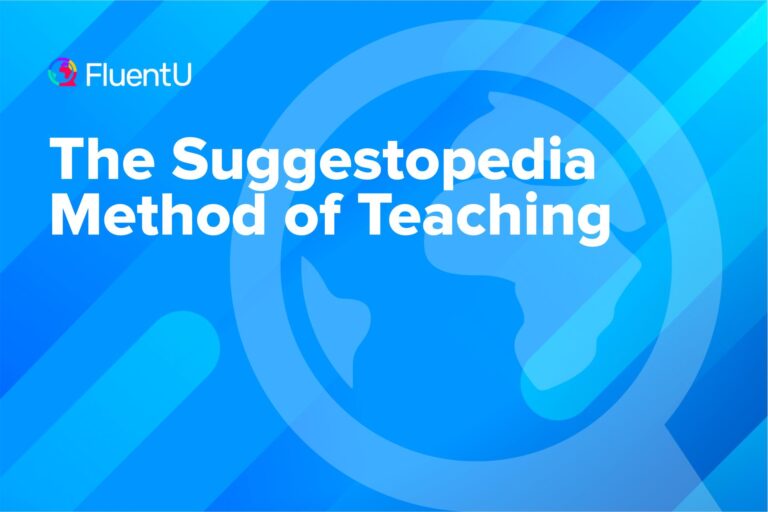10 Fun Drama Activities for Language Learning

Almost everyone loves to play-act, from kids in a beginning class to adults who’ve been working all day and need to let off steam. Drama activities can offer your students an entertaining way to apply the language they’ve learned by engaging their whole body and making learning into a game.
Here are 10 fun drama activities that will make language learning dynamic and keep students coming back for more.
Download: This blog post is available as a convenient and portable PDF that you can take anywhere. Click here to get a copy. (Download)
1. Charades
The game of Charades has existed since the 16th century. Most people have played one version or another of this game.
In this case, one student mutely uses mime and gesture to demonstrate a concept while the rest of the class tries to guess what they’re trying to communicate. This reinforces the connection between body language and spoken language, and the activity is especially useful for vocabulary review.
Setting up
- You’ll need: flashcards (one noun, verb or adjective each), two decks of playing cards, and a timer.
- Assign each student a number.
- Select a number at random. One method for doing this is to make two identical piles of playing cards—one for assigning numbers and another for selecting them later. (For example, with 20 students, you should have two identical piles of 20 cards made from two decks.)
- Set gestures to indicate a noun, verb or adjective. For example, “noun” could be represented by miming “hold a ball” with one hand. “Verb” could be knocking one wrist against the other. “Adjective” could be pointing to their own smiling face.
- Put seats in a semi-circle with space in the middle for the charade.
Doing the activity
- Randomly select a student to go first. (If you’re using cards, shuffle your pile, then give that student a flashcard.)
- Set your timer to one or two minutes—this is how long the student has to act out the word without making a sound. They should begin with one of the set gestures to indicate a noun, verb or adjective.
- The rest of the group will try to figure out the word. Remind your students to use complete sentences, like “Is it a ball?” or “Are you sad?” rather than simply shouting out words.
- If someone guesses the word before the time’s up, lead the applause and then pick the next student. Make sure everyone gets a chance to act out a word.
One variation is to combine two or three flashcards together (like an adjective with a noun, or a noun with a verb). “Is it a big ball?” or “Is the toaster running?” might be winning guesses in an ESL class, for example. The words don’t have to perfectly match—that’s part of the fun and should lead to lots of laughter.
2. Gibberish
This activity is meant to take the heat off the students, allowing them to experience communication without grammar, structure and vocabulary. It also helps students identify clues that lead to comprehension through gestures, tone of voice and body language. This is a good activity for practicing reported speech and general past tense explanations.
Setting up
- You’ll need: a deck of cards, situation flashcards (“What you did last night,” “What happened on the way to class,” etc.), and a timer.
- Put seats in a semi-circle with space in the middle for two chairs and a table.
Doing the activity
- Have two cards of each number, such that there are the same number of total cards as there are students. Shuffle and pass out cards at random, and then have students find a partner with the same number.
- After all the pairs have matched up, collect one card from each pair.
- Shuffle these cards and pick one. This will be the first pair to sit at the table.
- Give one student a situation card (which they don’t show their partner). That student now has one minute to explain, in a made-up gibberish language, whatever is noted on the card.
For example, a situation card might read “I got stopped by the cops while driving home last night,” and the acting student would have to try to convey that situation using gibberish, gestures and facial expressions. (Video example here.)
- When the timer goes off, the partner who watched must explain to the class, in the target language, what he or she has understood.
- You can have the class vote on whether they agree or disagree with this “translation.” The first student confirms the accuracy of the “translation.”
- Lead the class in applause and pick a new pair to do the same activity.
You can give the students more time to speak gibberish if your class time permits. You can also switch roles before changing pairs, so that all students get a chance to speak gibberish and to “translate.”
3. Draw an Object
In this activity, students will be guessing vocabulary based upon drawings done by their classmates. Though it sounds like the popular picture-drawing game, it’s actually a double header activity, with two teams guessing at the same time. This is another activity that’s great for vocabulary review.
Setting up
- You’ll need: vocabulary flashcards and a timer.
- Draw a line down the middle of the blackboard.
- Divide the students into two groups and have each group stand on their side of the board.
Doing the activity
- Pull aside one member from each group to the back of the room. Show these two students the same flashcard.
- The two students must rush to the board and will have one minute to draw something that will get their group to figure out the word. However, they cannot draw the item that was on the card!
If the word is “book,” for example, they can’t draw a book. Students must draw something else—maybe a shelf, reading glasses or Harry Potter and Dr. Seuss’s cat with a hat.
- Remind your students to use complete sentences in the target language when guessing (i.e. “Is it a book?”), rather than shouting out single words.
- When someone guesses the correct word, pull aside two more people and begin again.
You could give points for each team, but the best way to do this activity is to keep the students moving and changing words. You can also repeat words, as long as different students draw them. This activity should be done quickly and with mounting excitement and noise levels; everyone should be talking at once.
4. Where Are We?
In this activity, students will be acting out different objects that are characteristic of a certain place. Though they are miming the objects, students should also use verbal language related to the room.
For example, if they are in an operating room, there will be a table, the instruments, the lighting setup. They could say “Nurse, hand me the scalpel” or “How’s his pulse?”
Setting up
- You’ll need: some place flashcards (i.e. “dentist office,” “library,” “supermarket”) and a bag of various props.
- Place the seats in a semi-circle formation.
- Group students in pairs or trios, with one table per group.
- Students can also choose one prop per actor from the prop bag.
Doing the activity
- Get the first pair (or trio) up on stage and give them a place card. Give them a minute to organize their ideas together.
- They now have two minutes to show the rest of the students where they are by arranging the table and chairs, using the props and having a relevant conversation in the target language. They cannot directly name their location.
- When the timer goes off, ask the audience to guess, in complete sentences, where the scene just took place.
- Applaud and change pairs.
5. Mirror Talk
This activity is based on the mirror mimicking game many of us played as children. Instead of simply pretending to be a mirror and following the leader’s movements, one student has to try to say the same thing the other is saying in unison, as if it were a choral exercise.
Setting up
- You’ll need: a timer.
- Seats are arranged in a semi-circle.
- Have students pair off.
- On the board, list several questions in one column, with answers in the other column. Let the students see the questions and answers they’ll be using.
Doing the activity
- Call the first pair to center stage.
- Student A can face the board while student B has their back to the board and can’t see what’s written.
- Set your timer to one minute.
- Point to questions on the board, which student A (who can see them) will ask aloud. As student A speaks, student B will try to say the same question at the same time as their partner.
- Afterward, point to that question’s answer, which student A also reads (and student B tries to say at the same time, mimicking his or her partner). Point to questions randomly, but match the answer to the question.
- Switch the students and do another minute.
- Call up a new pair.
Once every pair has done two minutes, begin the second round. This time, you will point to questions at random, but not match the answers. For instance, you could choose a question like “How old are you?” with the answer “At ten o’clock.” This random choosing will keep the students on their toes and concentrating on trying to mimic their partner as closely as possible without anticipating.
6. Name Six
This is a fun vocabulary review activity that can be used as a warm-up. It’s based on the old hot potato game many of us played as kids.
Setting up
- You’ll need: a beanbag or squishy toy.
- Push all the chairs and tables back and have students sit on the floor.
Doing the activity
- Choose one student to stand in the middle of the circle. This student closes their eyes and turns around slowly, counting to ten.
- Meanwhile, the circle passes the hot potato around as fast as possible (so as not to burn their hands).
- When the center student reaches ten, they call out “stop,” open their eyes and point at the student with the hot potato.
- You will then give a category, such as “Six words that begin with ‘p’!” (If the language you’re teaching uses pictographs instead of an alphabet, you can use a reference word, like “Six colors!” or “Six adjectives!”)
- The hot potato is passed around the circle again while the chosen student has to say six words that begin with the letter “p” before the potato comes back to them.
- If the student succeeds, there’s no change and the activity begins again. If the student does not succeed, then they become the student in the middle who turns and counts.
- Repeat the sequence.
You can adjust the number of words to be said or the number of times the hot potato is passed according to the number of students in your class and their level. Be sure to give a fair amount of time for producing the words.
7. Story Performance
Physically performing stories helps students internalize the meaning of the vocabulary they’re learning. It helps establish a congruence between oral language and body language.
The level of your students’ abilities will dictate the complexity of the story they should perform. Often, familiar fairy tales are so well-known that they easily lend themselves to a performance retelling.
Setting up
- Have each student read a story. Alternatively, assign them to perform a true story from their own life (e.g. “My most embarrassing moment” or “The scariest day of my life”).
- Students should have enough time in or outside of class to rehearse their story performances.
Doing the activity
- Each student takes a turn performing their story.
- In addition to broad action, students should keep fine body language in mind, such as eye contact, facial expressions and hand gestures.
- Students may also consider how to employ their voices in their story performance. They can vary the pace and volume of their speech for effect, or use different voices for different characters.
8. Two Truths and a Lie
This one is great for helping students get to know each other at the start of a new semester or year. Students present three statements about themselves, one of which is a lie. Can the student use their acting skills to misdirect the group?
Setting up
- You’ll need: slips of paper and pencils for students to keep track of their points (optional).
- Divide students into groups of five to seven.
- Have groups sit together in a circle.
Doing the activity
- Have each group pick someone to go first.
- That person gives three statements about themselves: two that are true, and one that is a lie.
- The rest of the group guesses which statement is false. They should come to a consensus.
- If the group guesses incorrectly, the student gets a point. If the group correctly identifies the lie, no one gets a point.
- The next person in the circle takes a turn.
- The activity continues until someone achieves a certain number of points—or, if you’re not playing with points, until everyone has had equal turns.
This game can be played with any number of people, but larger groups take longer to form a consensus and may not remember as much about each other. Adjust the size of your groups depending on the size of your class and how much time is available for the activity.
9. The Story Circle
This is a fun activity that can be easily adapted for more or less improvisation depending on the ability of your students. They will tell a story, one word at a time, going around in a circle. It’s great for reinforcing syntax and grammar rules in the target language.
Setting up
- Arrange students in a circle.
Doing the activity
- Pick someone to go first. That student says the first word of the story.
- Going around the circle, each student adds one word.
- Encourage grammatical correctness over what “makes sense.” The more silly it gets, the more fun everyone will have!
For beginner students, you might ask them to retell a story they are already familiar with, while more advanced students can create their own tale.
This activity can also be modified by instructing students to use a specific tense, or to use a single sentence per person rather than a word.
10. Synchronized Storytelling
In this activity, students work in pairs to tell a story. This can be combined with a creative writing task, or the students can tell a story that’s familiar to them.
Setting up
- You’ll need: a selection of props and costume items (optional).
- Group students in pairs.
- Arrange seats in a semi-circle with space in the middle for the storytellers.
Doing the activity
- Pick a pair to go first.
- One person tells their story orally, while their partner acts it out using props (if they so choose).
- They can swap roles midway so everyone gets a chance to narrate and act.
- Repeat for each pair.
Why Use Drama Activities to Teach a Language?
Drama activities, besides being a fun and exciting way to break through the doldrums of the traditional language class, directly add value to the language student’s learning experience. Below are just some of the ways that using these activities can help energize your classroom.
Combine verbal and non-verbal communication
Using drama activities in your language classroom will help your students connect the verbal communication involved in vocabulary, grammar and structure with the non-verbal communication of gestures, facial expressions and movement.
By introducing a drama activity that gets your students on their feet, you take the focus off of speaking the language “correctly.” They can begin to understand that combining what they say with other natural, non-verbal cues will help them overcome shyness.
Focus on contextual meaning
A simple question/answer activity has limited context for your students. A drama activity, on the other hand, puts students into a situation where the language being practiced makes sense within a larger context. Drama sets a scene, and the scene sets the language to be used.
Drama activities are a great way to review and reinforce regular classroom learning because they bring study material to life.
Increase student motivation and interest
Students can easily get bored just sitting in their seats, looking at the board, taking notes and reading from the text. Though we can’t always get away from these activities in our language class, we can alleviate boredom by alternating regular classwork with drama activities.
Getting the students on their feet, moving about the classroom and shouting out answers will foster more interest in the material while also motivating students to participate in class.
Shift the responsibility of practicing to the students
Finally, drama activities create an important shift of focus in the classroom.
- You, the teacher, are no longer standing at the front with all eyes on you.
- Students are no longer reciting prepared answers to questions; they have to think on their feet.
- You become quiet while they make all the noise.
Your evaluation will still be important, but you’ll be silently observing for the majority of these student-oriented activities. While your students are busy interacting with one another, they can “forget” that you’re there. This creates a relaxing, fun atmosphere where quality language practice can take place.
Drama activities are not only a great way to get your students more involved in the class. They can also serve as useful review, a reward for work well done and a break from the sometimes unavoidable routine of text work, taking notes and sitting exams.
Have fun with your students while doing these activities, and they will show their appreciation with their enthusiasm in your language class!
Download: This blog post is available as a convenient and portable PDF that you can take anywhere. Click here to get a copy. (Download)




